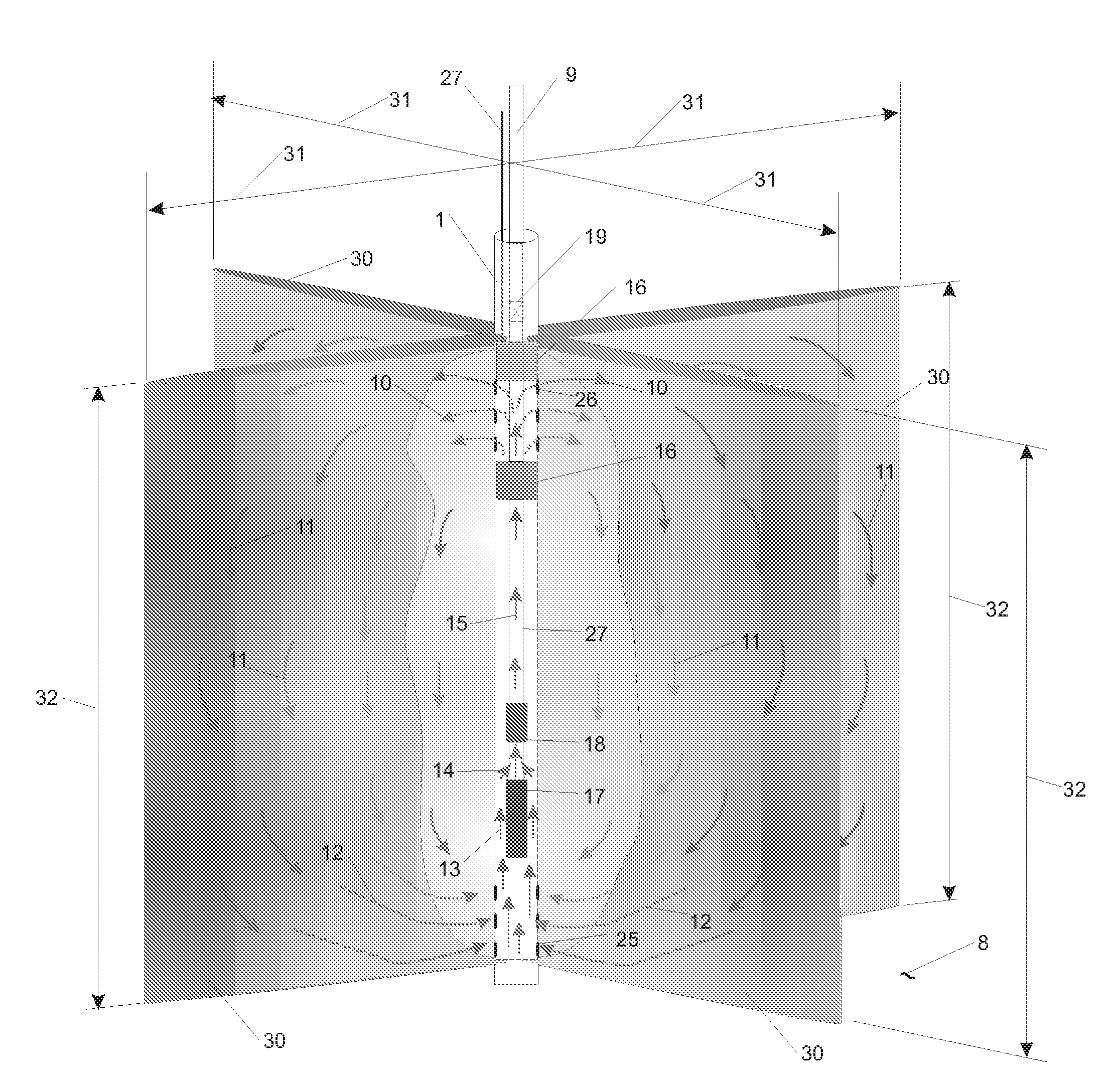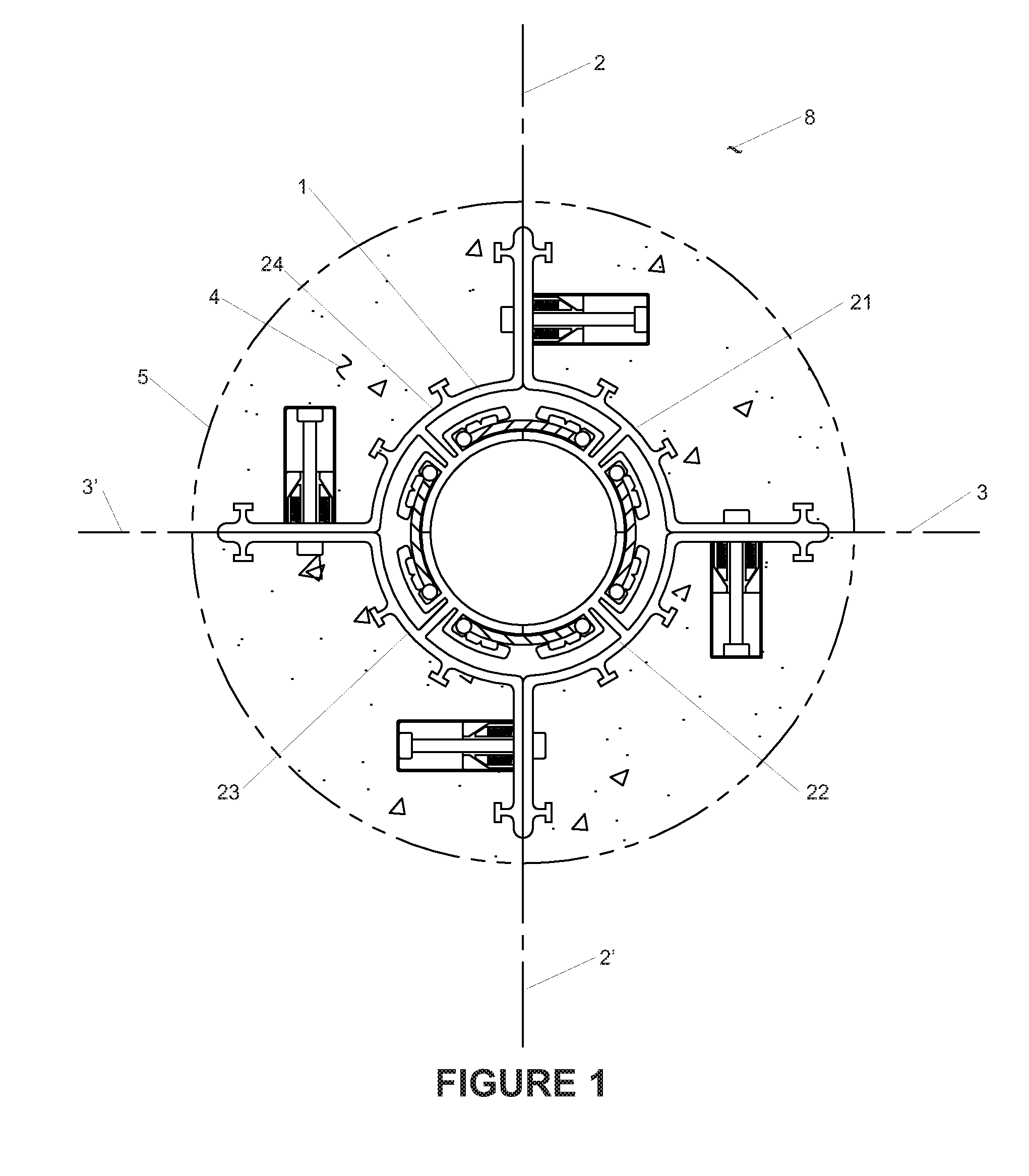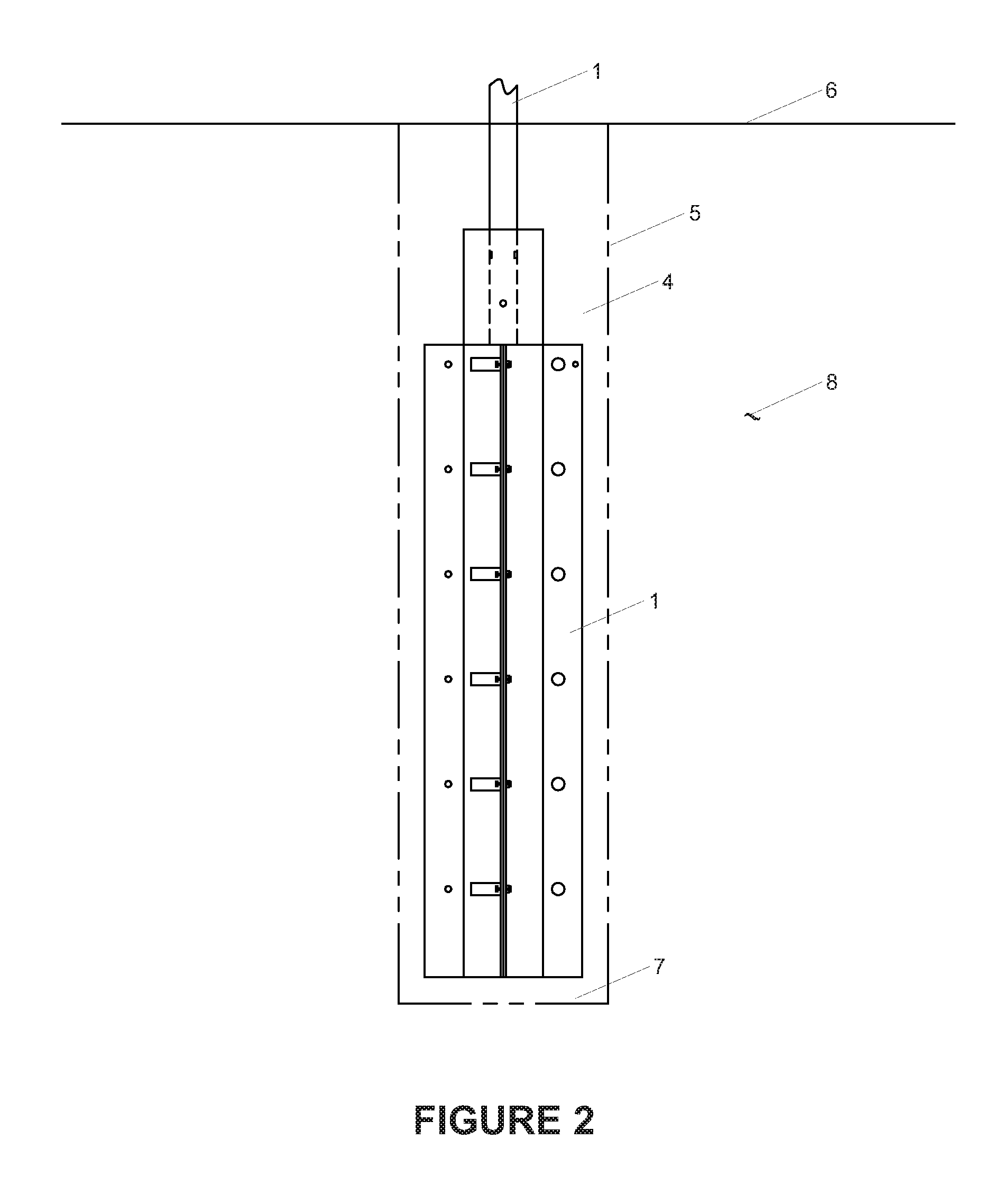Enhanced hydrocarbon recovery by convective heating of oil sand formations
a technology of convective heating and hydrocarbon recovery, which is applied in the direction of fluid removal, insulation, borehole/well accessories, etc., can solve the problems of large energy consumption of thermal recovery processes using steam, inability to meet the needs of oil sand formations, etc., to achieve the effect of increasing the production of petroleum fluids and enhancing the recovery of petroleum fluids
- Summary
- Abstract
- Description
- Claims
- Application Information
AI Technical Summary
Benefits of technology
Problems solved by technology
Method used
Image
Examples
Embodiment Construction
[0039]Several embodiments of the present invention are described below and illustrated in the accompanying drawings. The present invention involves a method and apparatus for enhanced recovery of petroleum fluids from the subsurface by convective heating of the oil sand formation and the heavy oil and bitumen in situ, by either a downhole heater in the well bore or heat supplied to the well bore by a heat transferring fluid from a surface fired heater or surface burner. Multiple propped hydraulic fractures are constructed from the well bore into the oil sand formation and filled with a highly permeable proppant. The permeable propped fractures and well bore are filled with a diluent, the heater and pump activated with forced thermal convective flow forcing the heated diluent to flow upward and outward in the propped fractures and circulating back down and back towards the well bore heating the oil sands and in situ bitumen on the vertical faces of the propped fractures. The diluent ...
PUM
 Login to View More
Login to View More Abstract
Description
Claims
Application Information
 Login to View More
Login to View More - R&D
- Intellectual Property
- Life Sciences
- Materials
- Tech Scout
- Unparalleled Data Quality
- Higher Quality Content
- 60% Fewer Hallucinations
Browse by: Latest US Patents, China's latest patents, Technical Efficacy Thesaurus, Application Domain, Technology Topic, Popular Technical Reports.
© 2025 PatSnap. All rights reserved.Legal|Privacy policy|Modern Slavery Act Transparency Statement|Sitemap|About US| Contact US: help@patsnap.com



